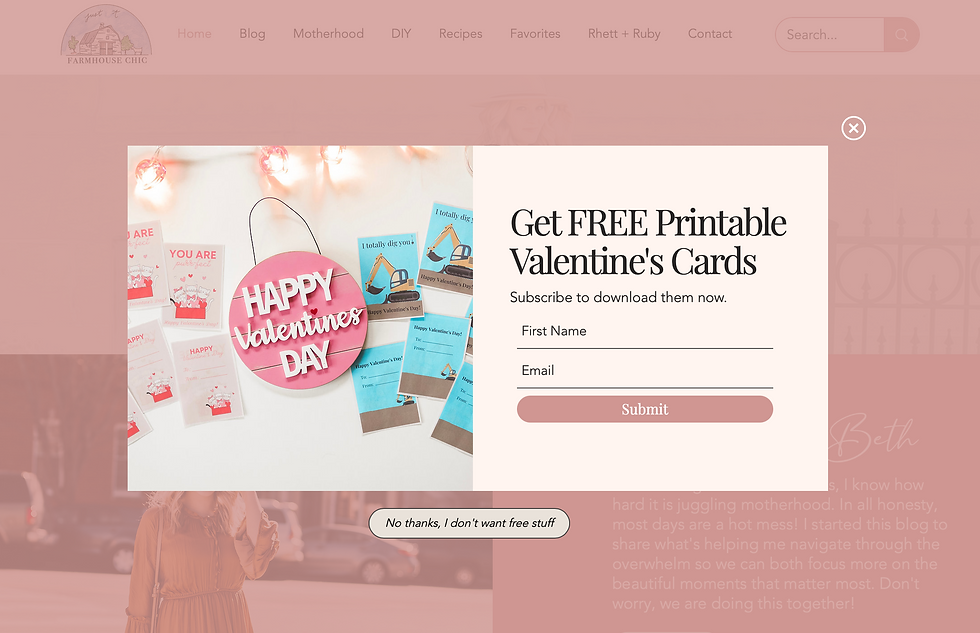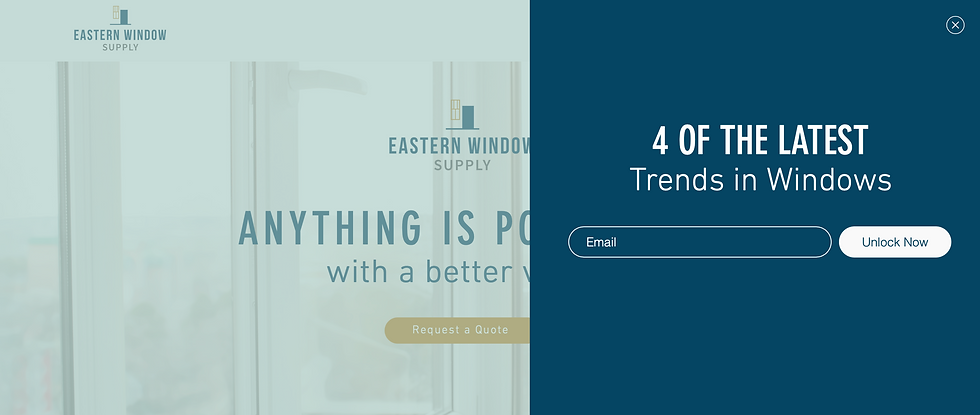7 Website Secrets to Generate More Business & Leads
- Abigail Ann

- Mar 13, 2022
- 7 min read
Updated: Jan 23, 2023
Does creating a website seem like a completely overwhelming task? It's okay, you're not alone. I'm here to share 7 tips that will help your website convert more leads. Having a website is an investment, whether you're investing your time to DIY it yourself or you're paying someone like me to do it. Not to mention all the other overhead we incur as business owners.
My goal with all my clients, is to listen and understand their business goals, what they have to offer, and present that in a way that brings their vision to life and helps them reach their business goals.
In this blog post, I'm sharing 7 Secrets to Generate More Business & Leads. I'll be covering:
How to make what you offer clear, but not salesy
How to display the written sections on your site in a compelling way
How to make your website look great on a computer and a phone
The basics to starting and growing an email list
How to know what to send your email list
How to automate your sales process and set expectations
How to display long form information in an easy to digest way
Whether you're trying to build a website yourself or you have a website you're not loving, you're in the right place. These 7 Website Secrets can work as a checklist for your current website or a checklist if you're wanting to build it yourself.
Bonus: If you'd prefer to listen instead of reading through this blog post, today's your lucky day! My business coach and I recorded a podcast episode all about it. Listen or read, whichever way you learn best. Listen on Spotify or through the player below.
1. How to make what you offer clear, but not salesy
The biggest thing I notice that's always missing on websites is a clear call to action. A call to action or 'CTA' is a marketing term for something that prompts an immediate response or encourages an immediate sale. Examples of a call to action could be: buy now, shop now, request a quote, schedule a call, etc. For every client I work with I include a button with a CTA at the top of their website. The top of a website is called, the header. Including a CTA in the header makes the next step you want your viewers to take extremely clear. Determining your CTA starts with your business goals and strategy. To determine this really narrow in on your core offer and base your CTA around that.
2. How to display the written sections on your site in a compelling way
They say you have an average of 8 seconds to capture someone's attention on a website. People don't part with dollars unless it's solving a problem they have. If you're not able to convey the problem you solve for your viewer within those 8 seconds, they're quickly moving on to your competitors website. So how do we make this happen? It's simple. The section right under the header needs to explain briefly, the problem you solve, in a way that relates to your target audience. The photo below is an example of a client of mine who owns a fitness company. Her call to action and offer is extremely clear and the background photo gives them a visual representation of her offering as well. Not to mention those inspiring muscles that are HERS by the way!! #soinspiring

3. How to make your website look great on a computer and a phone
The secret to this is, make your website mobile friendly. A study from 2020 shared that globally, 68.1% of all website visits came from mobile devices. With all the new technology coming out every year, I believe this number will continue to increase. How we consume information and interact with businesses is changing constantly. Being a business owner means we must be willing to pivot, implement new changes, and keep improving day in and day out. It can be overwhelming at times, but I promise you, having a website that is mobile friendly is one of those changes that's worth it, because it will increase your ROI. (Return on Investment)
4. The basics to starting and growing an email list aka building your funnel
You've probably heard you should be collecting email addresses, but why? Growing a following on social media is great, but if that's the only place you connect with your audience you're in big trouble. I've heard of clients who've gotten their accounts hacked or their account is shut down because they didn't follow the rules on that platform. This can be devastating, but imagine if you could connect with all of those people over email. You'd still have a way to share information, follow up, share sales etc.
So what does it mean to grow your funnel? Everyone's talking about it, but most people don't fully understand what it means and how it translates to their business. Building your funnel is a marketing term that means delivering marketing messages that speak to people who are in different stages of the buying process. Developing a funnel through automated emails is where closing leads can become almost automatic. Let's say your funnel starts with someone visiting your website. If they're not 100% ready to buy or book your service, they may scroll through to see what you have to offer and then close the page. The goal would be to collect their email since they're interested, but still not sure if they want to commit yet. This is why you need a lead magnet.
What's a lead magnet? A lead magnet is an email opt in that gives you the chance to offer free information in exchange for an email address. The information you provide through an automated email will help them trust you and your brand more. Having their email allows you the ability to follow up and share helpful information with them. As they receive your emails their trust in you grows and so does their curiosity about what you have to offer. Check out these lead magnets that have helped my clients grow their email list and their business.



5. Once you have their email address, what should you send them?
Alright, let's say you've got your lead magnet set up, you're getting email subscribers, what's the next step? The lead magnet should trigger a drip campaign.
What's a drip campaign? A drip campaign is a marketing term that refers to your communication strategy that sends "drips", a pre-written set of automated emails or messages to customers/prospects over time.
By setting up a few more automated emails that include helpful information, you automate your follow up process with new leads. Keep in mind though, when someone subscribes to your lead magnet but they don't schedule a call, request a quote, or follow through with your CTA it means they're in the curiosity phase still. This means they're just looking to learn more, they're not necessarily ready to commit yet. Setting up a drip campaign to offer more helpful information has the potential to move them from curiosity, to enlightenment. When a lead is in the enlightenment phase, that means they've realized you can solve the problem they have and they're getting closer to being ready to commit.
6. How to automate your sales process and set expectations
What is a sales process? A sales process is similar to your funnel, but less complicated. Your sales process is simply the steps it takes for your viewer to actually engage in your call to action. Think about what they need to do to utilize your service. Do they need to request a quote? Do they need to schedule a call? Can they purchase on your website without you having to talk to them? Really narrow down the simplest way they can make a purchase. The harder it is for them to understand what's next, the less likely it is that they'll actually convert.
By setting up automated emails after they engage in your call to action, you're able to set the expectation on the front end, automatically. Keep in mind this does take a lot of strategy and planning before you can actually set up the automated emails. If you have a form someone needs to fill out, or if they can simply purchase on your site, you're going to want to set up a sales campaign. A sales campaign is similar to your drip campaign in the fact that it's automated, but it's much more sales forward than the drip campaign.
There's so many routes a sales campaign can take. It can be used to set an expectation as to when they can expect to hear back from you. If they've purchased a product that maybe brings in a lot of frequently asked questions, you could create an automated email that links to a full FAQ page. If they fill out a form to learn more, you could include an automated email for them to book a call. The list goes on. The biggest thing to keep in mind is that your sale campaign is for hot leads and your drip campaign is for leads that are just getting warmed up.
7 How to display long form information in an easy to digest way
Including a blog on your website is the best way to share long form information. Not only can you separate information into different topics easily, it also gives you something to include in those drip campaign emails. I have a client that does an incredible job networking in facebook groups by utilizing her blog posts. If someone has a question that one of her blog posts answers, she'll reply to the post with a genuinely sweet comment and paste the link to the blog post.
Her website views are the highest of all the clients I've had in the last 3 years now, simply because she's setting out to help people. Her goal in interacting with people online isn't to make a sale. Her goal is always to answer questions and help people. Not only are her website views the highest of anyone I've ever seen, her income is also the highest of anyone I've ever seen as well. She has multiple businesses, but her heart within each of them remains the same. Having a blog can be a lot of work in the beginning, but creating content that will help your target audience has a huge return on investment.
If you've ever typed in a question through the Google search bar then clicked a link, that link is most likely a blog post, or a page dedicated to answering the question you searched. So not only is it helping you have content for emails and social media, it's also increasing your chances of showing up on the top page of Google. As you grow your audience, you can even start making money from your blog by monetizing it. I could go on forever about blogging and the potential it can unlock for your business. If this really peeked your interest, drop me and email and let me know if you'd like me to write more on this topic. You can find my email by scrolling to the bottom of this page. If at any point you're working through these steps and you want to strategize one on one, I do offer coaching and consulting on all the topics listed above.




